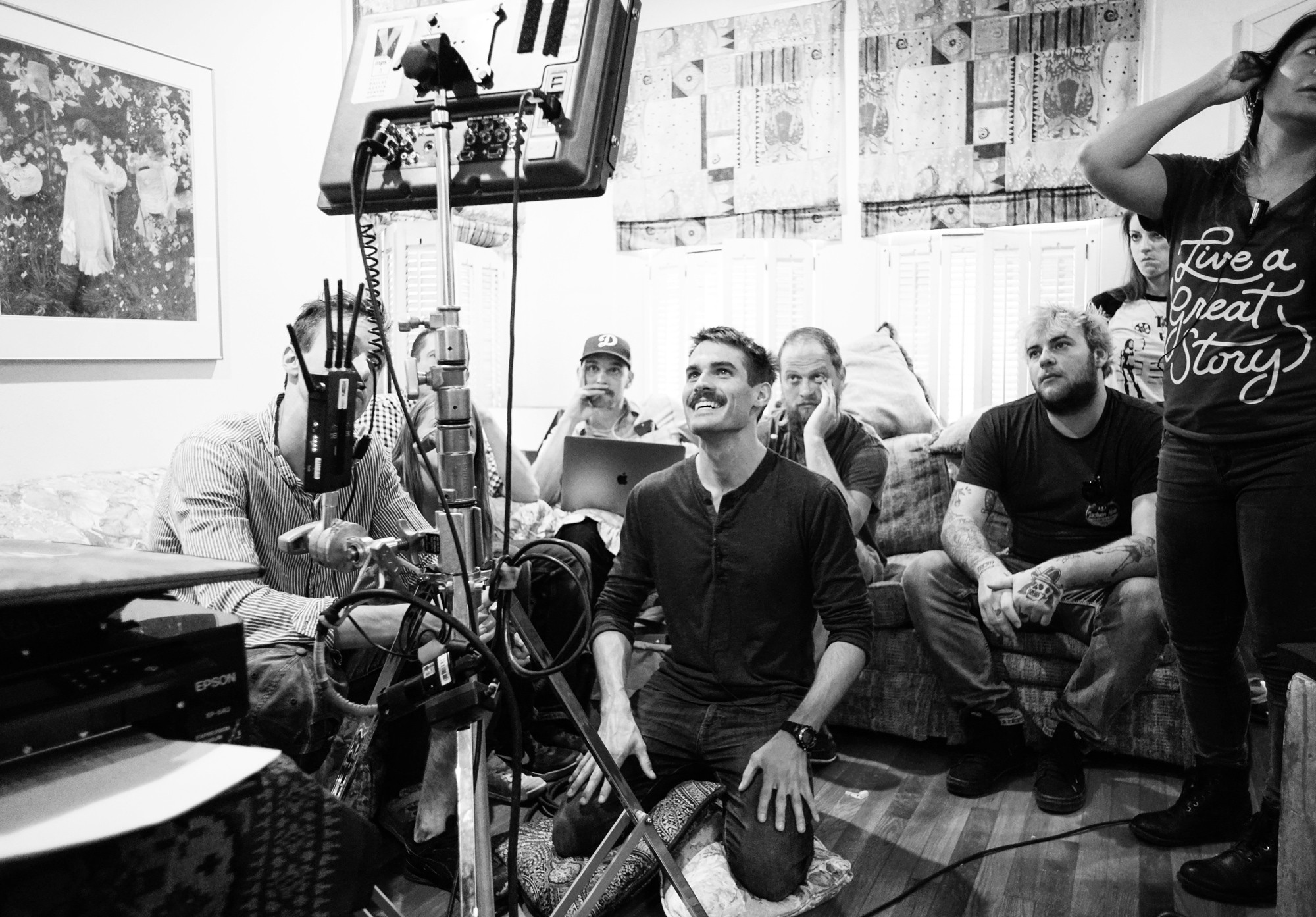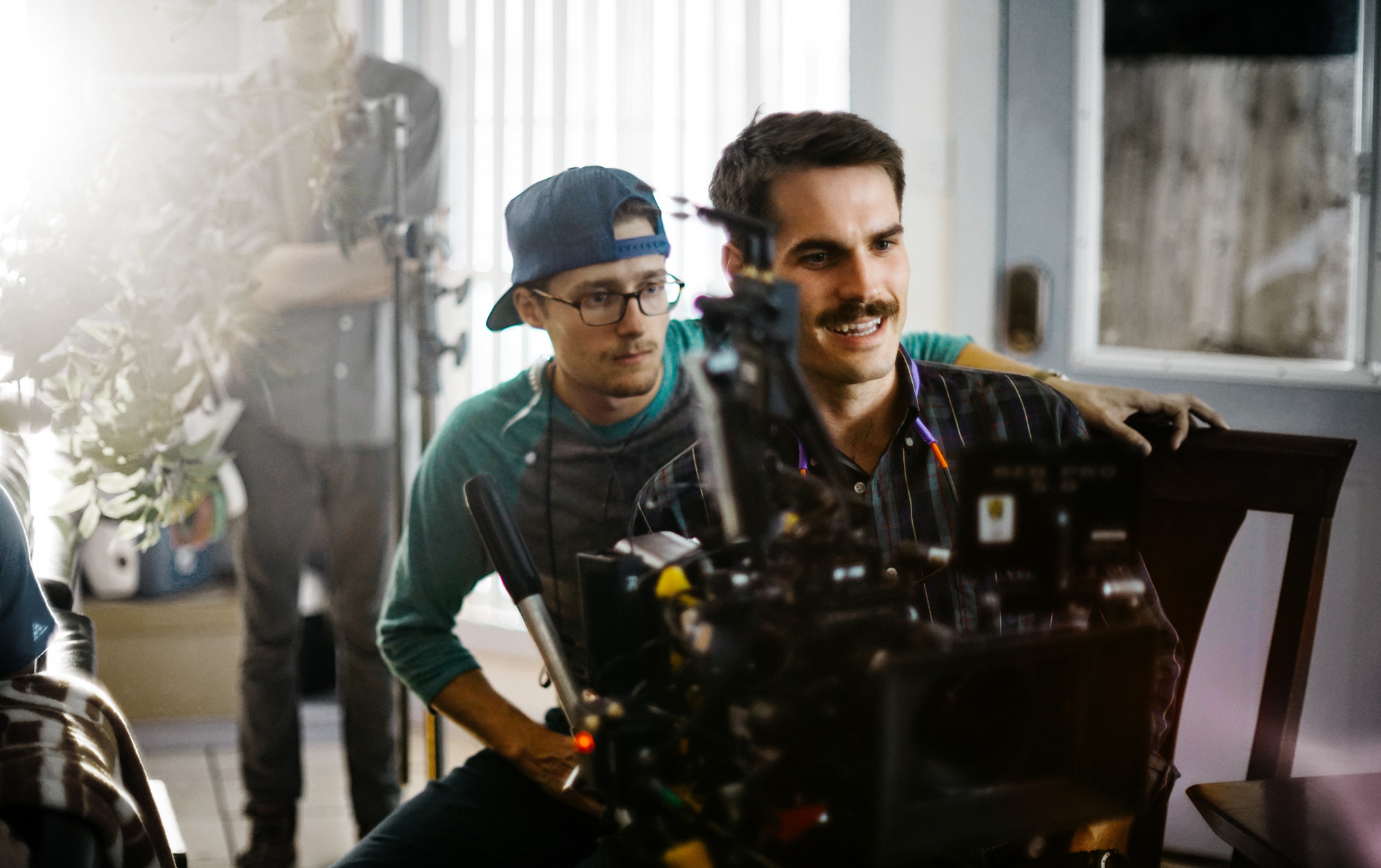Ho Ho Ho!
Hope you all are enjoying your holidays, or holidaze more accurately. From cookies to chocolate, stuffing to being stuffed, it's a time of the year where we can all look back on where we thought we were going and whether we got there or not.
This was a year where the DIY Film Festival shifted out of WithoutABox website into Film Freeway.
The jury is out, as they say, whether that will be an effective move. We focus on do it yourself filmmaking and filmmakers, and have a history of highlighting some really interesting and different works that their creators have submitted to our festival. As noted, we used to have screenings at the Egyptian in Hollywood - and eventually we found that our audience was mostly online, quite a few overseas and from around the globe.
We've highlighted film from around the globe; from Ukraine, from Syria, from Iran, from India, from Australia, New Zealand and all points inbetween. It didn't make sense for us to invite filmmakers to come to Hollywood at their own expense - and because streaming services have become so advanced, we took the leap into the cyber world of film festivals.
We like to highlight stories from a variety of places, passions - and Pinnacle Editing systems has been instrumental in giving us packages to the award winners. But just making the film, finishing the film can be a reward in itself. It takes a lot of time effort and help from others in order to finish a film - and we are aware of all that effort entails.
This is just one of many venues that people can submit their film to, one of many festivals to highlight the creative effort put into a work. One never knows who is going to be inspired by doing so.
 We can point to one of our festival winners who submitted a non synch sound film some years ago, a film without dialog, but was so powerful and moving that it won the festival. That filmmaker reached out to us after the awards ceremony and said that he felt encouraged by the award, that despite having a good day job doing work in the film business for others, the encouragement and recognition gave him something else to consider and is now directing feature films and advertising.
We can point to one of our festival winners who submitted a non synch sound film some years ago, a film without dialog, but was so powerful and moving that it won the festival. That filmmaker reached out to us after the awards ceremony and said that he felt encouraged by the award, that despite having a good day job doing work in the film business for others, the encouragement and recognition gave him something else to consider and is now directing feature films and advertising.
We have seen other filmmakers make incredible pieces with special effects, with great acting, with comic twists and turns - but what they have in common is not that they made it with an eye to their wallet, but with an eye to their hearts.
 Which is what we reflect on during the holiday season. Giving gifts that come from the heart. And we at the DIY Film Fest like to point out that gifts can come in all sizes, including films that are
Which is what we reflect on during the holiday season. Giving gifts that come from the heart. And we at the DIY Film Fest like to point out that gifts can come in all sizes, including films that are
made from the heart, and when finished, folks are looking for a place to have their work highlighted.
We used to have people mail in DVDs - and now that WithoutaBox has disappeared, we may one day find a different method for receiving submissions. But for the time being we're using FilmFreeway to see how that goes. We've been at this for 16 years, and the films themselves can be seen at the side of this page, or links to them can be found there.
The goal? or the journey is the destination?
So anyone can see that we've been at this for awhile, and enjoy highlighting the best that DIY filmmaking can offer.
We are the only official DIY FILM FESTIVAL - a copyrighted concept - and we understand and appreciate that as a concept others may want to use that title to apply for their own work. "Doing it yourself" is a concept that comes out of the age we live in, where "when the cost of filmmaking is as much as a pencil and a piece of paper, then we will have true art in film" (to paraphrase Jean Cocteau)... so we encourage everyone to do the thing that moves them, put that thing that moves them into a camera, and edit that thing that moves them into a film.
One doesn't need to submit a film to a festival in order to complete their mission - it's nice to be asked into Sundance, Toronto, or the Cannes Film Festival (among others) and depending upon the city, there are some really fun and life changing festivals to be part of.

But there are also people reading this from around the globe, who may or may not be able to submit a film to those venues, and have found us instead. So welcome to you!
In order to submit your film to our festival, follow the links to the side of the page. Or click here and click on "Submit."
Follow your dream, follow your passion, and follow your heart. Happy Holidays!
Hope you all are enjoying your holidays, or holidaze more accurately. From cookies to chocolate, stuffing to being stuffed, it's a time of the year where we can all look back on where we thought we were going and whether we got there or not.
This was a year where the DIY Film Festival shifted out of WithoutABox website into Film Freeway.
The jury is out, as they say, whether that will be an effective move. We focus on do it yourself filmmaking and filmmakers, and have a history of highlighting some really interesting and different works that their creators have submitted to our festival. As noted, we used to have screenings at the Egyptian in Hollywood - and eventually we found that our audience was mostly online, quite a few overseas and from around the globe.
We like to highlight stories from a variety of places, passions - and Pinnacle Editing systems has been instrumental in giving us packages to the award winners. But just making the film, finishing the film can be a reward in itself. It takes a lot of time effort and help from others in order to finish a film - and we are aware of all that effort entails.
This is just one of many venues that people can submit their film to, one of many festivals to highlight the creative effort put into a work. One never knows who is going to be inspired by doing so.
 We can point to one of our festival winners who submitted a non synch sound film some years ago, a film without dialog, but was so powerful and moving that it won the festival. That filmmaker reached out to us after the awards ceremony and said that he felt encouraged by the award, that despite having a good day job doing work in the film business for others, the encouragement and recognition gave him something else to consider and is now directing feature films and advertising.
We can point to one of our festival winners who submitted a non synch sound film some years ago, a film without dialog, but was so powerful and moving that it won the festival. That filmmaker reached out to us after the awards ceremony and said that he felt encouraged by the award, that despite having a good day job doing work in the film business for others, the encouragement and recognition gave him something else to consider and is now directing feature films and advertising.We have seen other filmmakers make incredible pieces with special effects, with great acting, with comic twists and turns - but what they have in common is not that they made it with an eye to their wallet, but with an eye to their hearts.
 Which is what we reflect on during the holiday season. Giving gifts that come from the heart. And we at the DIY Film Fest like to point out that gifts can come in all sizes, including films that are
Which is what we reflect on during the holiday season. Giving gifts that come from the heart. And we at the DIY Film Fest like to point out that gifts can come in all sizes, including films that aremade from the heart, and when finished, folks are looking for a place to have their work highlighted.
We used to have people mail in DVDs - and now that WithoutaBox has disappeared, we may one day find a different method for receiving submissions. But for the time being we're using FilmFreeway to see how that goes. We've been at this for 16 years, and the films themselves can be seen at the side of this page, or links to them can be found there.
The goal? or the journey is the destination?
 | ||
So anyone can see that we've been at this for awhile, and enjoy highlighting the best that DIY filmmaking can offer.
We are the only official DIY FILM FESTIVAL - a copyrighted concept - and we understand and appreciate that as a concept others may want to use that title to apply for their own work. "Doing it yourself" is a concept that comes out of the age we live in, where "when the cost of filmmaking is as much as a pencil and a piece of paper, then we will have true art in film" (to paraphrase Jean Cocteau)... so we encourage everyone to do the thing that moves them, put that thing that moves them into a camera, and edit that thing that moves them into a film.
One doesn't need to submit a film to a festival in order to complete their mission - it's nice to be asked into Sundance, Toronto, or the Cannes Film Festival (among others) and depending upon the city, there are some really fun and life changing festivals to be part of.

But there are also people reading this from around the globe, who may or may not be able to submit a film to those venues, and have found us instead. So welcome to you!
In order to submit your film to our festival, follow the links to the side of the page. Or click here and click on "Submit."
Follow your dream, follow your passion, and follow your heart. Happy Holidays!














































